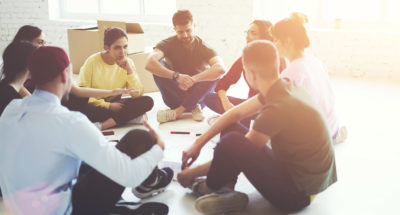
Strategies for Teaching Fearless SEL for Societal Change
Ideas for using CASEL’s five SEL competencies to help cultivate youth agency, civic engagement, and social change

Ideas for using CASEL’s five SEL competencies to help cultivate youth agency, civic engagement, and social change
Students will:
Take a moment to reflect on a problem in your school or home community that you would like to change or are already working to change. What SEL skills do you think would be most helpful to you in affecting this change?
Social-emotional learning (SEL) has tremendous potential to create the conditions for youth agency and civic engagement and, ultimately, social change. We owe our students an education relevant to their lives and that explicitly addresses the sociopolitical context. This will not only prepare our students to engage civically and peacefully across difference, but also to become the changemakers and leaders we need.
Below are some ways to cultivate students’ SEL skills while developing their sense of agency for social change:
Adapted from Dena Simmons’ ASCD article entitled “Why We Can’t Afford White-Washed Social-Emotional Learning,” with permission from the author.
How did students respond to these activities? Do you notice whether students are practicing SEL skills more often? Are they more interested and/or engaged in social change?
When teaching SEL, Researcher David Yeager and his colleagues argue that it’s important to address teens’ needs for status (“How do others treat me?”) and respect (“Am I granted the rights I expect to be granted as a student?”). If teens feel competent, autonomous, and valued in their community—if they have a sense of high status and respect, in other words—they’re likely to be more motivated and engaged to learn SEL skills
In addition, while research on the effectiveness of culturally-responsive teaching (CRT) is limited, a study of 244 grades 3-5 Latino students and their teachers found that certain components of CRT were positively related to student reading outcomes: teachers’ positive beliefs about CRT, their reaching out to parents to better understand students’ prior knowledge, and their critical awareness of how the traditional classroom in the U.S. is set up to support the dominant culture.
Finally, a study of four high schools serving low-income students of color found that student-centered learning increased academic achievement, graduation rates, and college entrance eligibility, and lowered the attrition rate once students were in college. Examples of student-centered learning included “supportive relationships between students and teachers in academic environments that are challenging, relevant, collaborative, student-directed, and connected to real-life situations.”
Teaching SEL skills within the larger socio-political context is one of the most effective and developmentally-appropriate ways for teaching these skills to middle and high schoolers. Indeed, Yeager argues that stand-alone SEL lessons, such as the ones found in K-5 SEL curricula, do not work for teens because they do not meet teens’ developmental needs.
In addition, many of our students face significant obstacles in their lives due to factors beyond their control, like health challenges, poverty, and institutionalized racism. Using culturally-responsive teaching that is student-centered–prompting students to connect with their strengths, identify what matters most to them, and envision ways they might contribute to the world–may ultimately help them to feel more respected and empowered. And, they are more likely to develop into adults who not only can identify societal issues that need to be changed, but also have the agency to do so.

Do you want to dive deeper into the science behind our GGIE practices? Enroll in one of our online courses for educators!
Comments